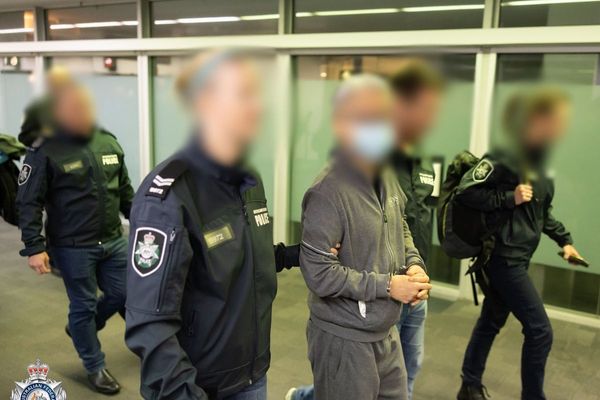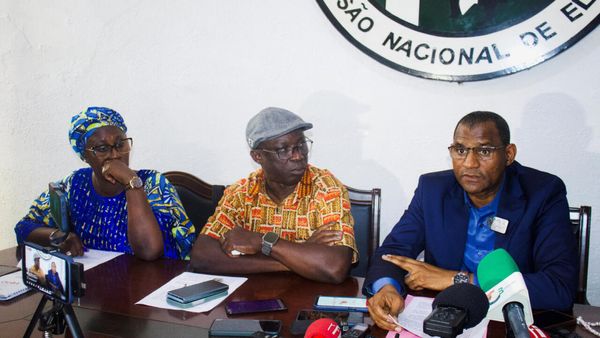
Jen Bartlett, who has died aged 93, was part of a husband-and-wife team that brought groundbreaking natural history films to television audiences around the world, including to ITV as part of its long-running Survival series. Des Bartlett did most of the cinematography, and Jen was the stills photographer. Five of her photos were selected by National Geographic magazine for their top 100 wildlife images of the 20th century.
Their first Survival films were shot in North America and helped establish stand-alone wildlife documentaries as components of peak-time television schedules on both sides of the Atlantic. Leading the way was The World of the Beaver (1970), described by the producer Colin Willock as “the film that really gave birth to the one-hour Survival Special”.
Even more striking was The Flight of the Snow Geese (1972), for which Des and Jen followed 300,000 geese on their 2,500-mile migration from Hudson Bay in north-eastern Canada to the Mississippi Delta in the American south. They took parental responsibility for 14 orphaned goslings and filmed the birds in close-up migratory flight from the back of a moving station wagon. The footage was accompanied by the ballad Fly High and Free, sung by Glen Campbell, and the Bartletts won an Emmy for the cinematography.
They made documentaries for Survival for more than 20 years, taking footage of whales off the coast of Patagonia and wildlife on and around the Falkland Islands and the Antarctic Peninsula. They also went back to their native Australia to make The Wonderful Kangaroo (1977).
Eventually they settled in Africa, after filming the extraordinary diversity of coastline, desert and wildlife of Namibia in 1978. They made more than 20 films there, starting with The Waterhole (1980) and Lions of Etosha (1981) for Survival, both shot in Etosha National Park.
Survivors of the Skeleton Coast, for National Geographic, set in north-west Namibia, earned them their second Emmy in 1993. Memorable footage included desert elephants sliding down sand dunes, the first time such behaviour had been filmed. Many of their Namibian films aired in prime time across the US and Europe, and the Bartletts’ work has been credited with placing Namibia on the map as a beacon for conservation and environmental tourism.
Born in Wahroonga, near Sydney, Jen was one of the three children of Zeta (nee Wellwood), a dance teacher, and Leslie Edmondson, a sales rep. The couple had moved to Australia from New Zealand.
On leaving Hornsby girls’ high school in Sydney, Jen initially worked as a dental assistant. A promising young tennis player, she competed in tournaments in Australia and Europe, winning a couple of minor titles, and also played in mixed doubles with her fellow Australians Ken Rosewall and Rod Laver.
In 1954 she was introduced to Des by her brother, Pat, who got to know him while he was filming in Australia for the documentary-maker Armand Denis. Their respective international commitments kept Jen and Des apart for two years until they met again in London, where Jen was competing in the 1956 Wimbledon tournament.
They married later that year, and Jen joined Des in Kenya and Tanganyika (now Tanzania) where he was filming for Armand and Michaela Denis’s popular BBC wildlife documentary series On Safari. In 1957 Jen gave birth to a daughter, Julie, who spent her early life on location in the wilds of Africa.
Jen had no formal training in photography but soon became highly proficient behind the lens. During their African adventures Jen and Des documented Louis and Mary Leakey’s discovery of early human fossils; they got to know George and Joy Adamson (Elsa, the “Born Free” lioness, once nearly licked the skin off Des’s face), and they filmed the capture of Samson, an orphaned elephant, which inspired David and Daphne Sheldrick to open an animal orphanage in the Tsavo National Park in Kenya.
After Armand Denis retired in the mid-1960s, the Bartletts signed up with Survival Anglia, a bright new natural history production company making programmes for ITV. It was part of Anglia Television, the regional company that had set out its stall to produce top-class drama and wildlife shows for the network.
Jen and Des both learned to fly to facilitate their film-making. Jen first piloted a Tiger Moth, and later flew microlights and an AirCam. In 1995, when a microlight that Des was piloting crashed in a remote region of Namibia, Jen was flying another microlight and landed nearby to find Des unconscious and a passenger badly injured. She then flew 30km to radio for help. As a medical rescue team flew 550km up from the Namibian capital, Windhoek, Jen returned to the crash site and was there to guide the helicopter in with a smoke flare. Eleven hours after the accident, Des and his passenger reached hospital, where they began a long period of recovery.
Jen and Des authored three books, Growing Up With Animals (1966), Nature’s Paradise (1967) and The Flight of the Snow Geese (1975). They also wrote and illustrated 12 articles for National Geographic magazine (including four cover stories), as well as contributing to other publications.
Des died in 2009. Jen is survived by Julie, a grandson, Tarl, and great-granddaughter Freya, and her two elder brothers, Pat and Terry.
• Jennifer Rowan Bartlett, wildlife photographer and conservationist, born 3 February 1932; died 20 May 2025







